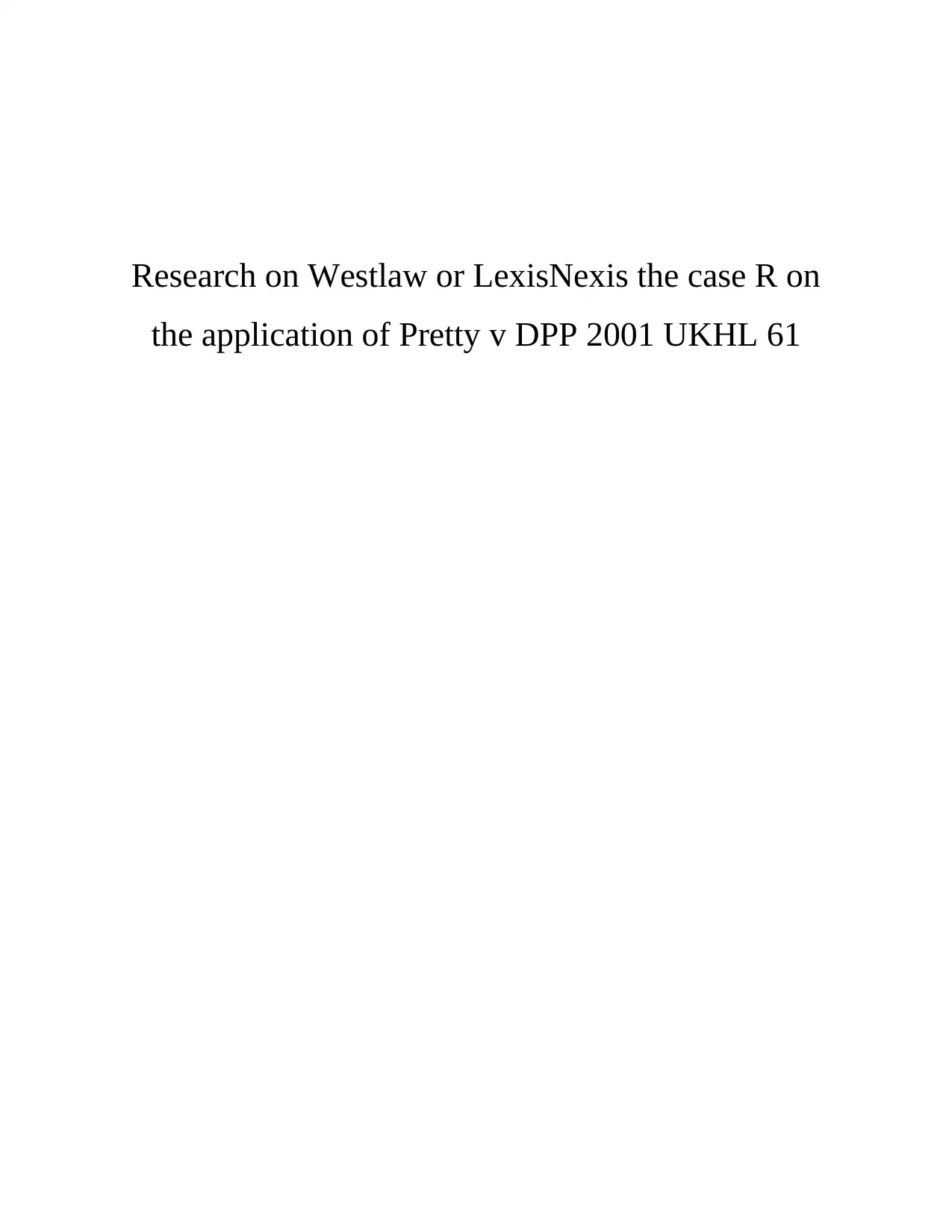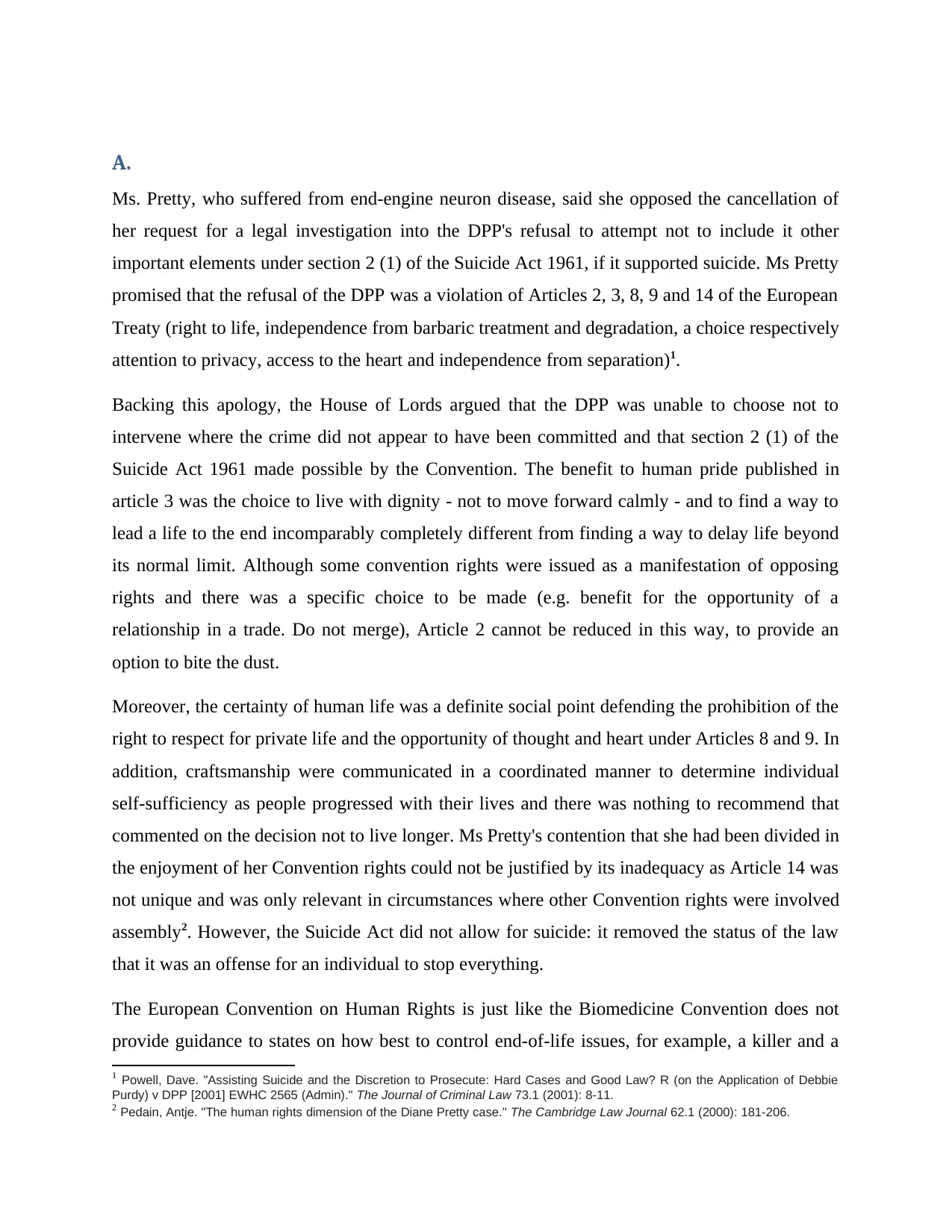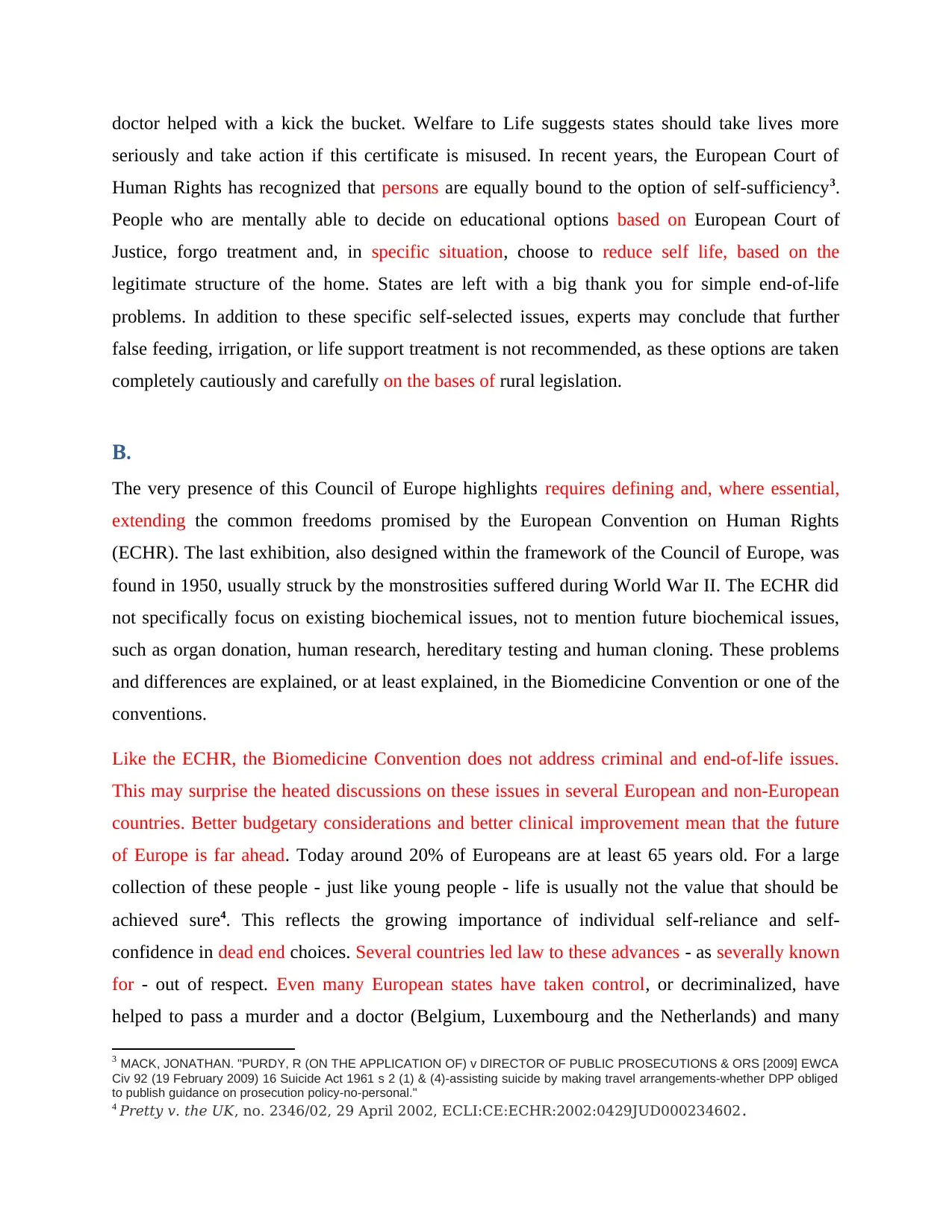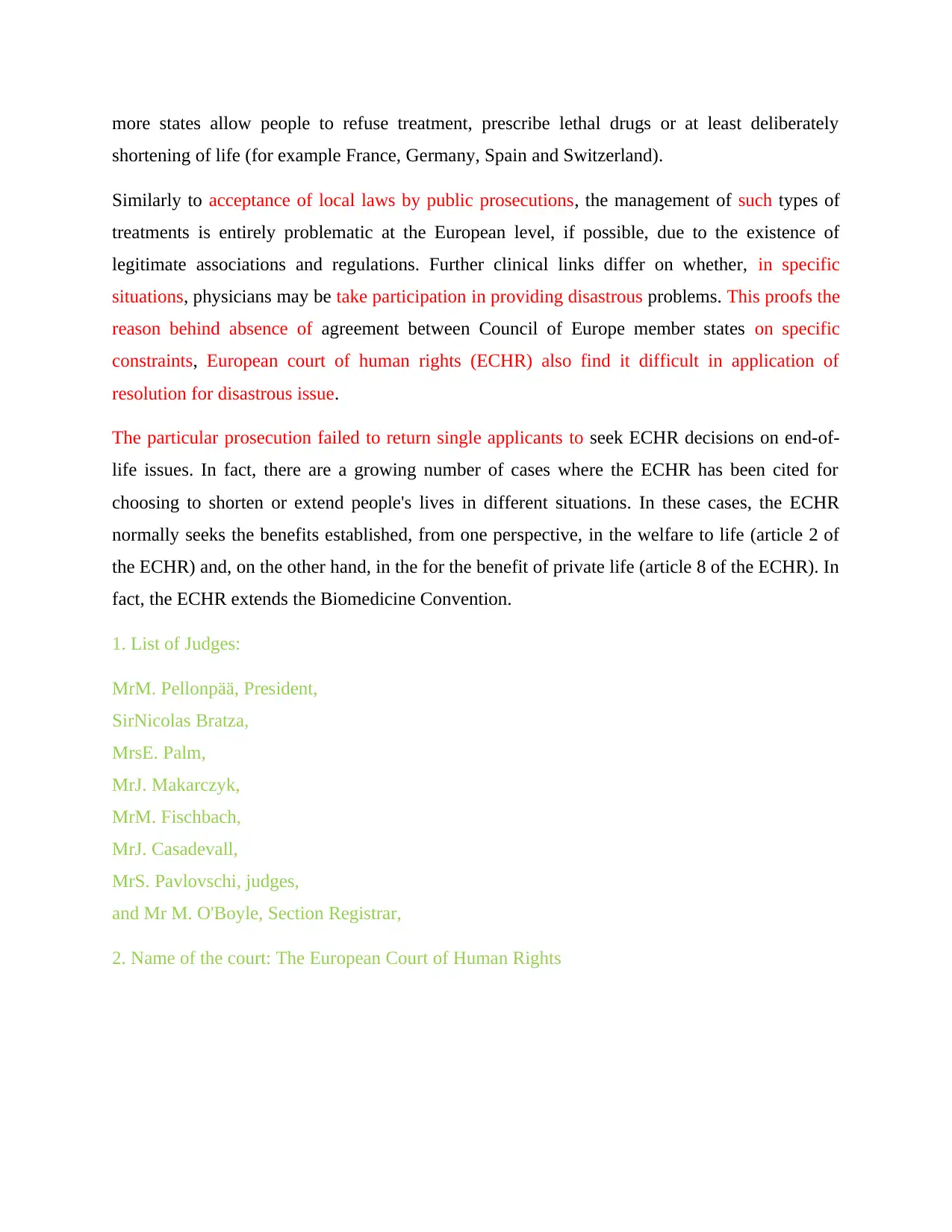R v DPP Case Study: European Court of Human Rights and End-of-Life
VerifiedAdded on 2023/01/05
|4
|1329
|76
Case Study
AI Summary
This case study analyzes the R v DPP case, focusing on the application of the Suicide Act 1961 and its implications under the European Convention on Human Rights. The case involves Ms. Pretty, who, suffering from motor neuron disease, challenged the DPP's refusal to guarantee non-intervention in assisted suicide, arguing violations of Articles 2, 3, 8, 9, and 14 of the European Treaty. The House of Lords supported the DPP's stance, stating that the Suicide Act did not permit suicide and that the Convention did not provide guidance to states on end-of-life issues. The analysis highlights the tension between the right to life and the right to private life, emphasizing the importance of individual self-reliance in end-of-life decisions, as recognized by the European Court of Human Rights. The study also references the Biomedicine Convention and the differing approaches to end-of-life issues among European countries, illustrating the complexities surrounding assisted suicide, euthanasia, and the role of medical professionals in such situations. The European Court of Human Rights typically balances the welfare to life (Article 2) and the benefit of private life (Article 8) in these cases, further extending the Biomedicine Convention.
1 out of 4





![Case Study: R. (on the application of Pretty) v DPP [2001] UKHL 61](/_next/image/?url=https%3A%2F%2Fdesklib.com%2Fmedia%2Fimages%2Fsb%2F79ead217d70f4371b236817af45986fa.jpg&w=256&q=75)


![[object Object]](/_next/static/media/star-bottom.7253800d.svg)